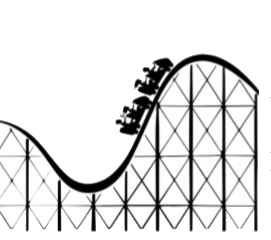For a cubic polynomial t(x)=px3+qx2+rx+s, which of the following is always true:
s≠0
r≠0
q≠0
p≠0
The correct Answer is:D
To solve the question regarding the cubic polynomial t(x)=px3+qx2+rx+s, we need to determine which statement is always true about this polynomial.
1. Identify the Form of the Cubic Polynomial:
The given polynomial is in the standard form of a cubic polynomial, which is t(x)=px3+qx2+rx+s.
2. Understand the Leading Coefficient:
In a cubic polynomial, the term with the highest degree (which is x3) is called the leading term. The coefficient of this term is referred to as the leading coefficient. In this case, the leading coefficient is p.
3. Condition for a Cubic Polynomial:
For a polynomial to be classified as cubic, the leading coefficient must be non-zero. This means p must not equal zero. If p=0, the polynomial would not be cubic; it would instead be a quadratic or lower degree polynomial.
4. Conclusion:
Therefore, the statement that is always true for the cubic polynomial t(x)=px3+qx2+rx+s is that the leading coefficient p must be non-zero. Hence, p≠0.
Final Answer:
The correct answer is that the leading coefficient p of the cubic polynomial is always non-zero, i.e., p≠0.
---
The given polynomial is in the standard form of a cubic polynomial, which is t(x)=px3+qx2+rx+s.
In a cubic polynomial, the term with the highest degree (which is x3) is called the leading term. The coefficient of this term is referred to as the leading coefficient. In this case, the leading coefficient is p.
For a polynomial to be classified as cubic, the leading coefficient must be non-zero. This means p must not equal zero. If p=0, the polynomial would not be cubic; it would instead be a quadratic or lower degree polynomial.
Therefore, the statement that is always true for the cubic polynomial t(x)=px3+qx2+rx+s is that the leading coefficient p must be non-zero. Hence, p≠0.
The correct answer is that the leading coefficient p of the cubic polynomial is always non-zero, i.e., p≠0.
Topper's Solved these Questions
- SAMPLE PAPER 1BOOK - EDUCART PUBLICATIONCHAPTER - SAMPLE PAPER 1EXERCISE - Section -A
20 Videos
- SAMPLE PAPER 1BOOK - EDUCART PUBLICATIONCHAPTER - SAMPLE PAPER 1EXERCISE - Section -B
20 Videos
- SAMPLE PAPER 1BOOK - EDUCART PUBLICATIONCHAPTER - SAMPLE PAPER 1EXERCISE - SECTION B
20 Videos
- SAMPLE PAPER 07BOOK - EDUCART PUBLICATIONCHAPTER - SAMPLE PAPER 07EXERCISE - SECTION -C
10 Videos
- SAMPLE PAPER 10BOOK - EDUCART PUBLICATIONCHAPTER - SAMPLE PAPER 10EXERCISE - SECTION-C
10 Videos
Similar Questions
Polynomials are everywhere. They play a key role in the study of algebra, in analysis and on the whole many mathematical problems involving them. Since, polynomials are used to describe curves of various types engineers use polynomials to graph the curves of roller coasters.

If the Roller Coaster is represented by the cubic polynomial t(x)=px3+qx2+rx+s, then which of the following is always true
View SolutionIf a, b and c are the zeroes of a cubic polynomial px3+qx2+rx+s and 0>a>b>c, then which of the following is true?
View Solution
Knowledge Check
If f(x)=∫x0(et+3)dt, then which of the following is always true ∀x∈R
Af(x−3)−f(x−1)≤11Bf(x+1)−f(x−1)<4Cf(x+3)−f(x−5)>24Df(x)+f(x+1)<−21If the roots of the equation ax2+bx+c=0 is 1k times the roots of px2+qx+r=0, then which of the following is true ?
Aa=pkBab=pqCaq=pbkDab=pqk2If px3+qx2+rx+s is exactly divisible by x2−1 , then which of the following is /are necessarily true ?
(A) p = r
)B) q = s
(C ) p =- r
(D) q =- sABoth (A) and (B)BBoth (C ) and (D)CBoth (A) and (B)DBoth (B) and ( C)
Consider the cubic equation x3+px2+qx+r=0, where p, q, r are real numbers, which of the following statement is correct?
View SolutionIf the zeros of the polynomial p(x)=x3−3x2+4x−.11 are a, b and c and the zeros of the polynomial q(x)=x3+rx2+sx+t are (a+b),(b+c)and(c+a), then find t
View SolutionIf α,β,γ,δ are roots of x4+px3+qx2+rx+s=0 then ∑α2βγ=
View SolutionIf the equations x2+bx+c=0 and x2+dx+e=0 have a common root, which of fhe dollowing can be the common root?
View SolutionIf the equations x2−px+q=0 and x2+qx−p=0 have a common root, then which one of the following is correct?
View Solution
